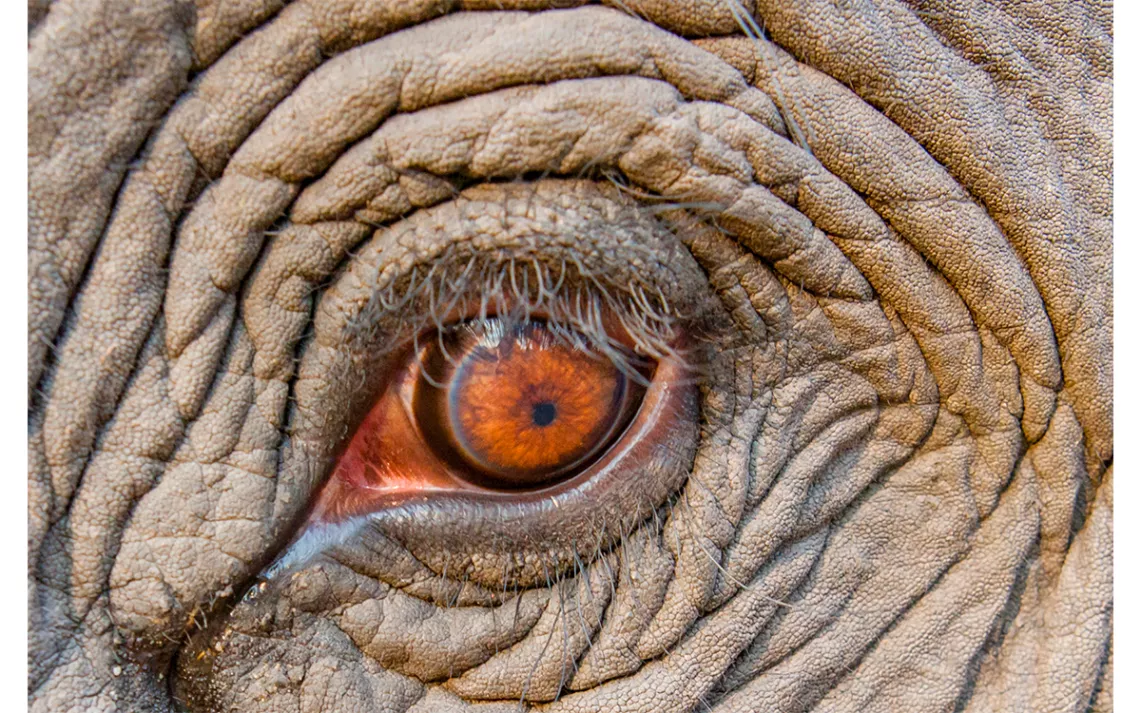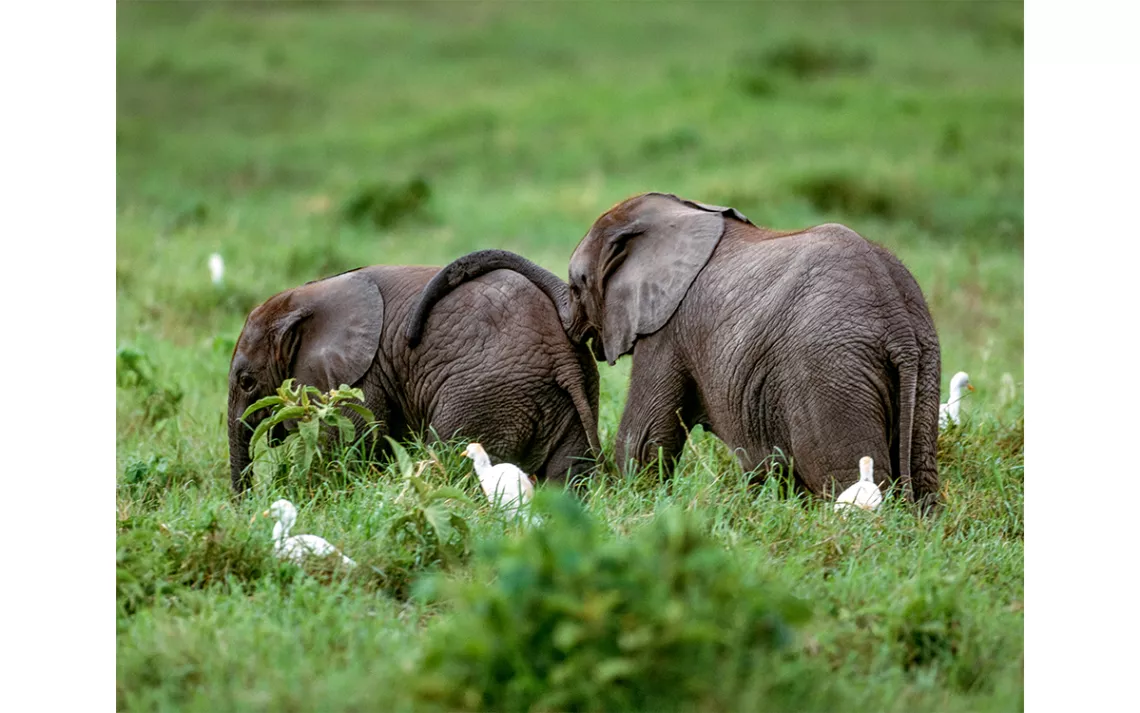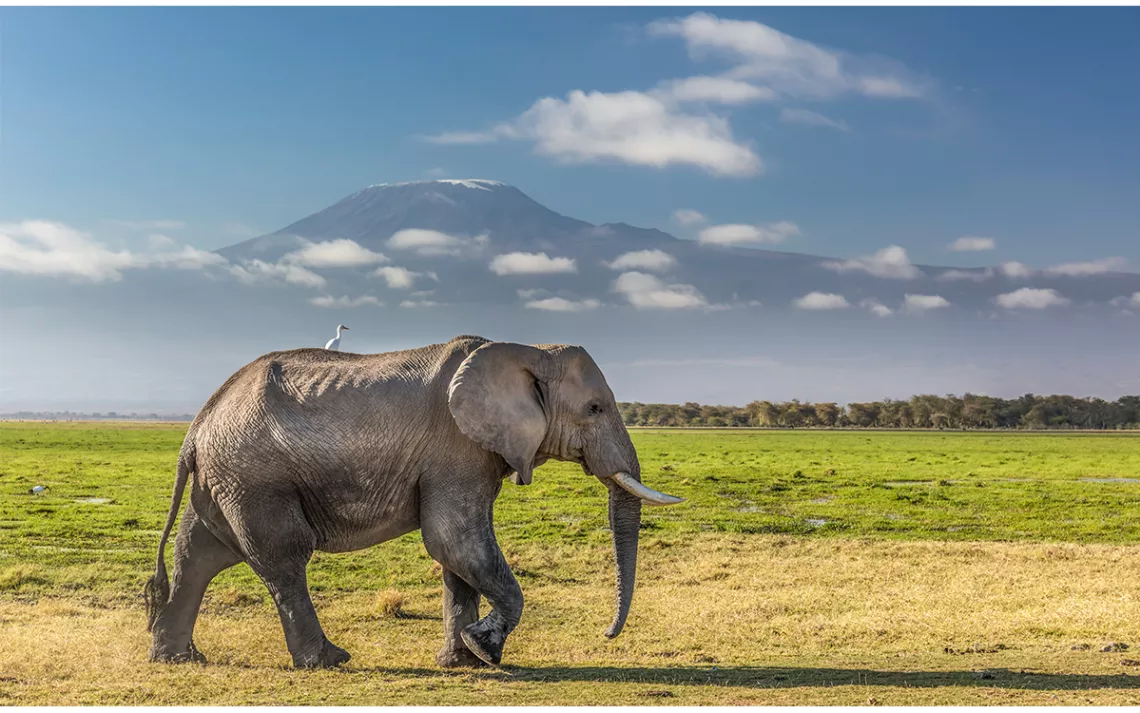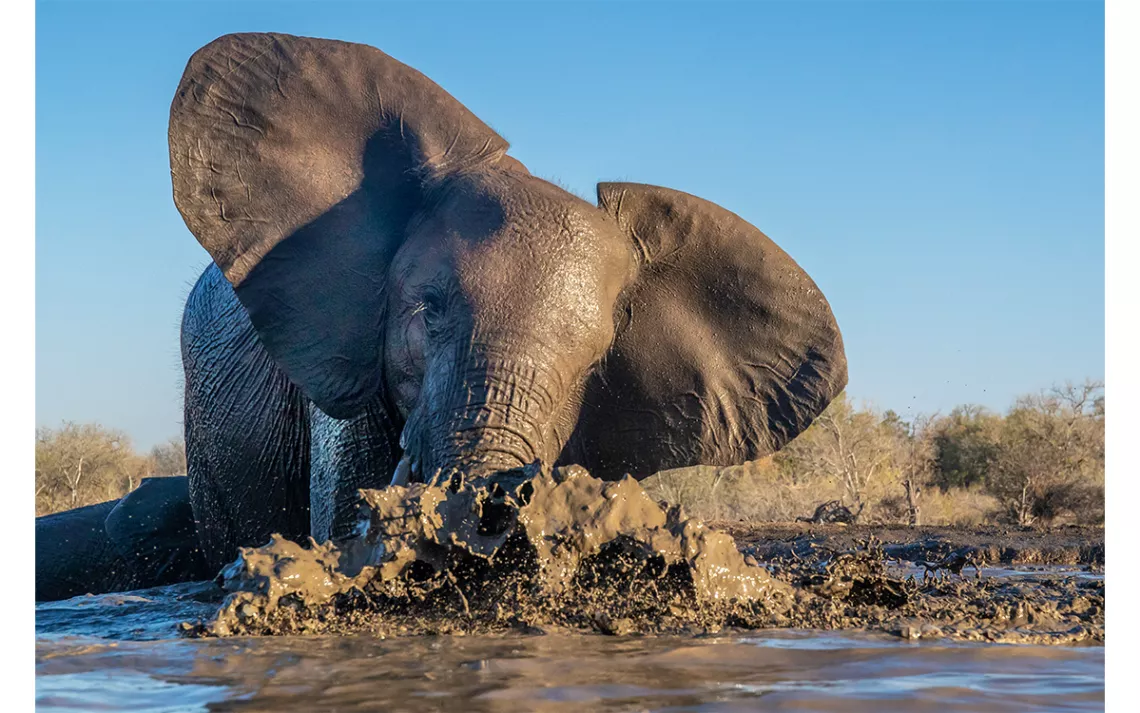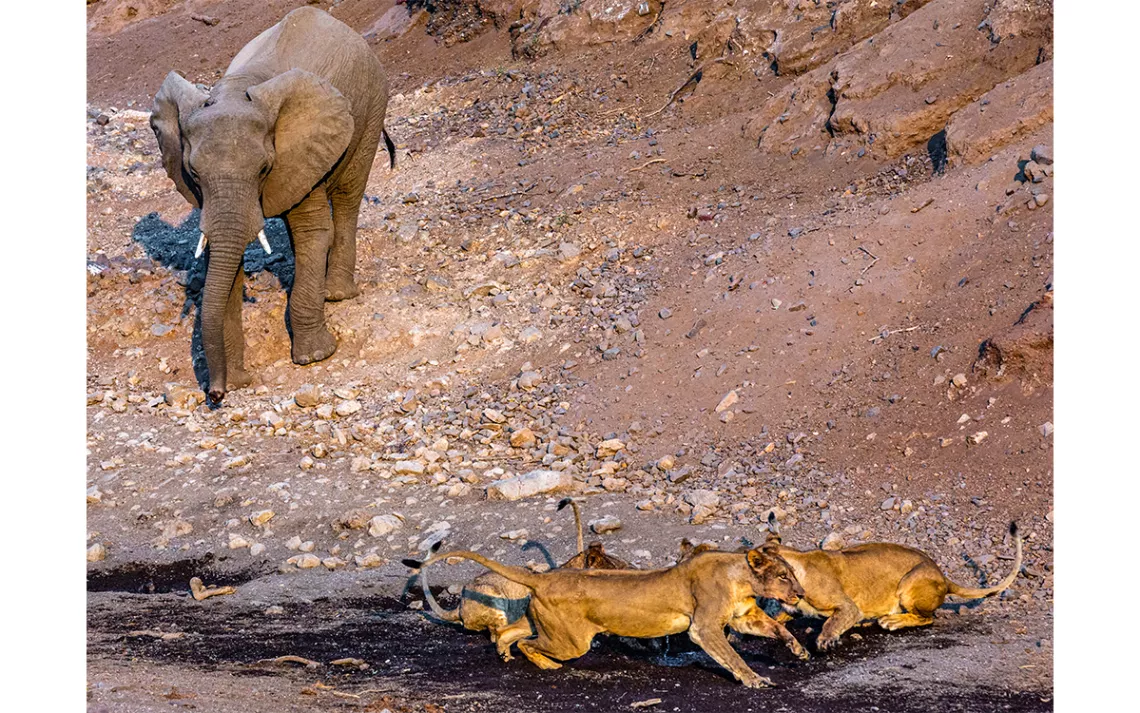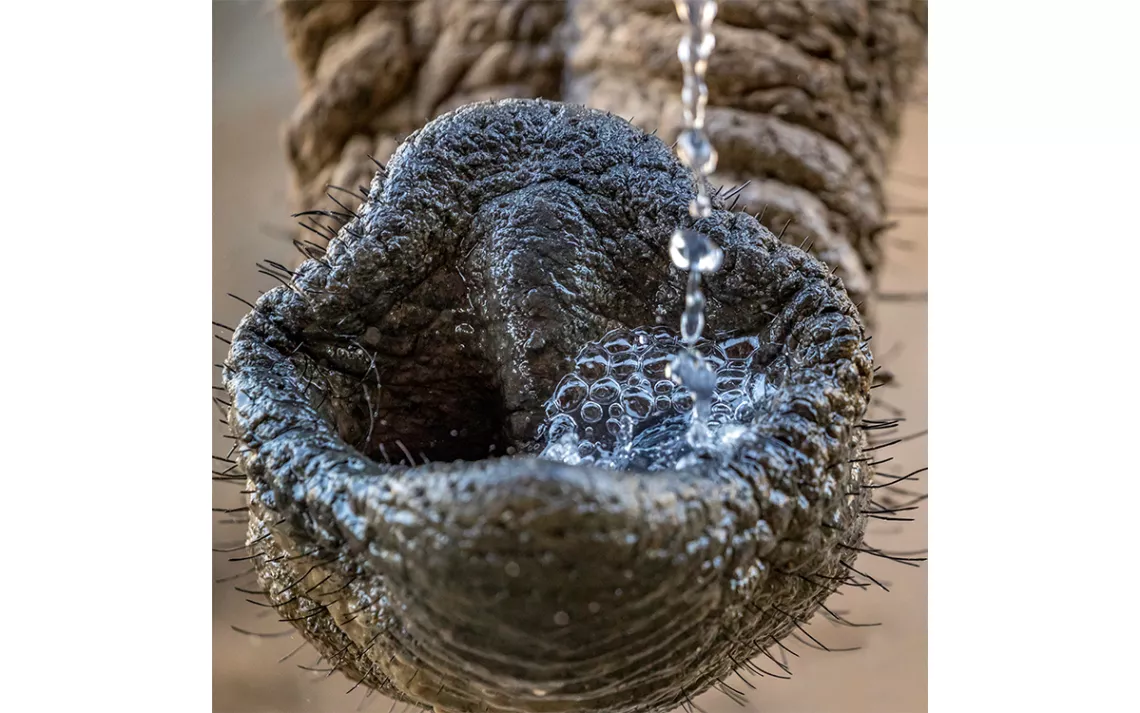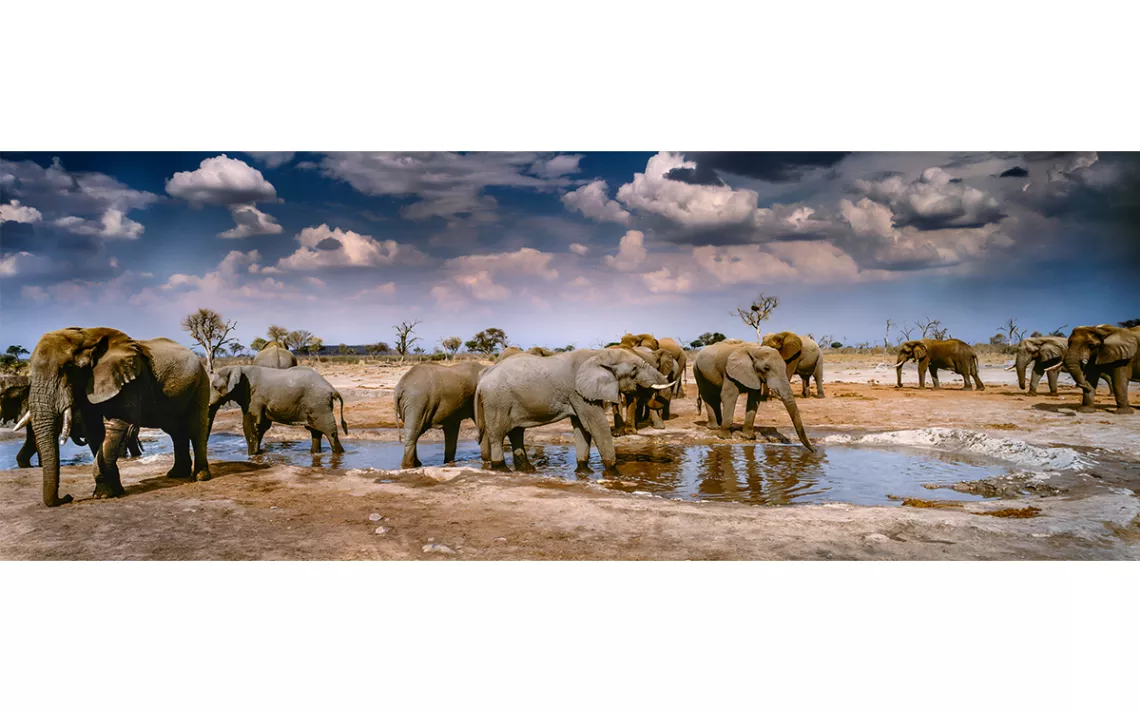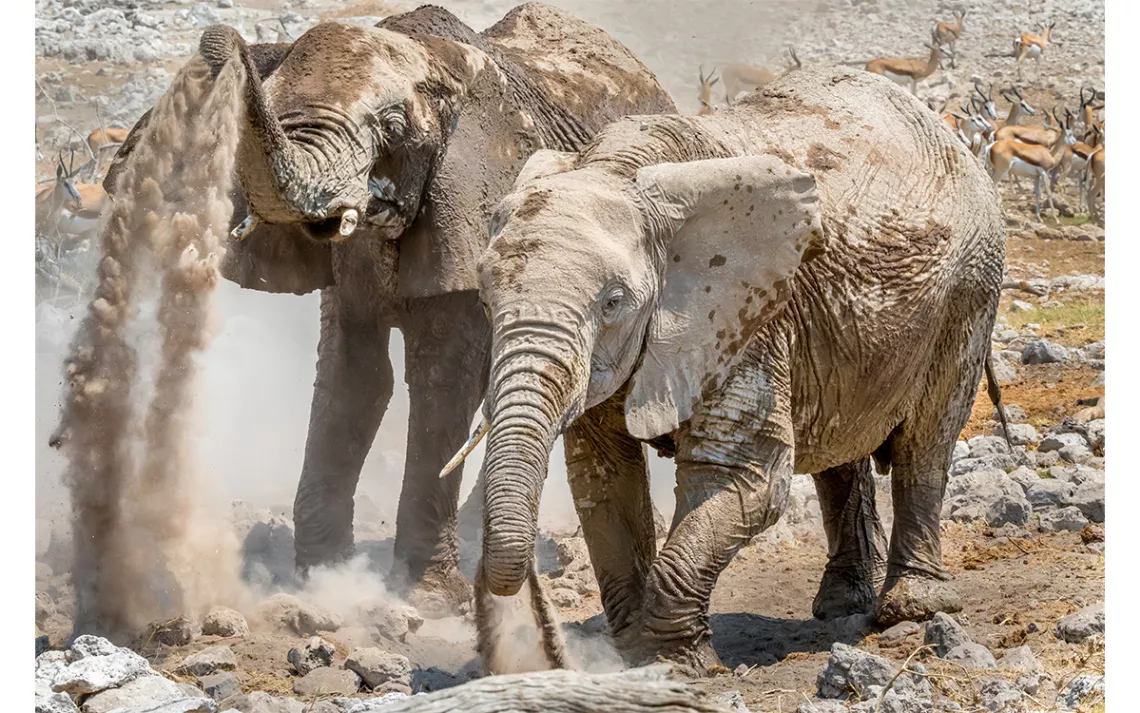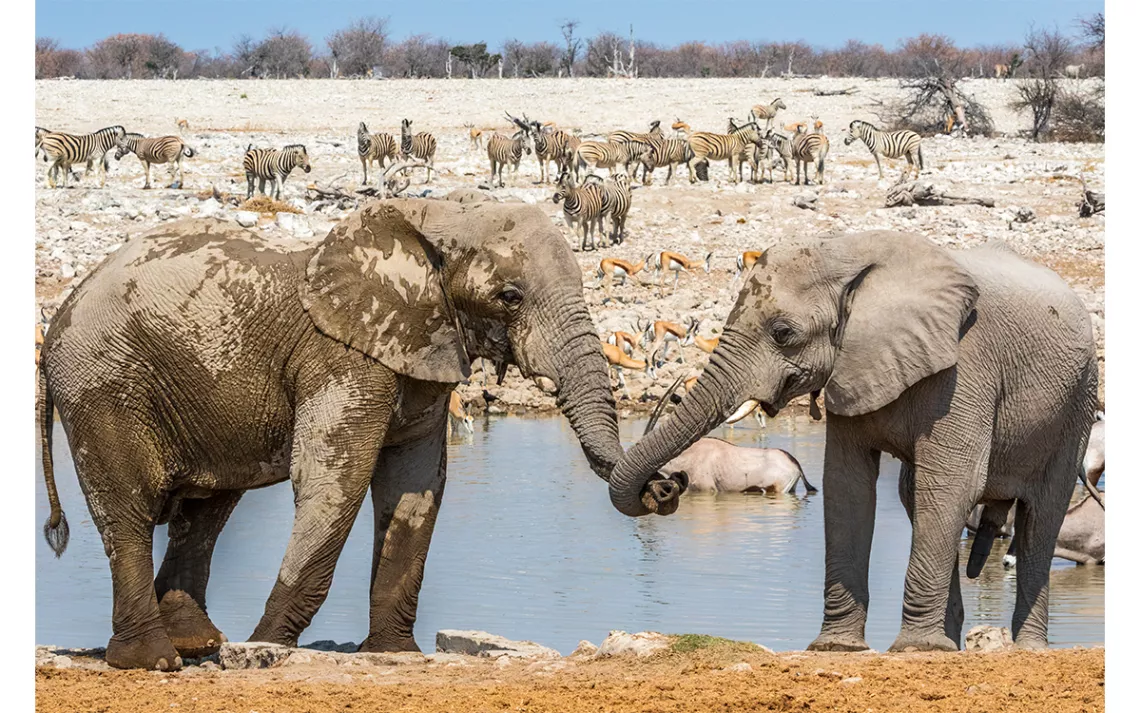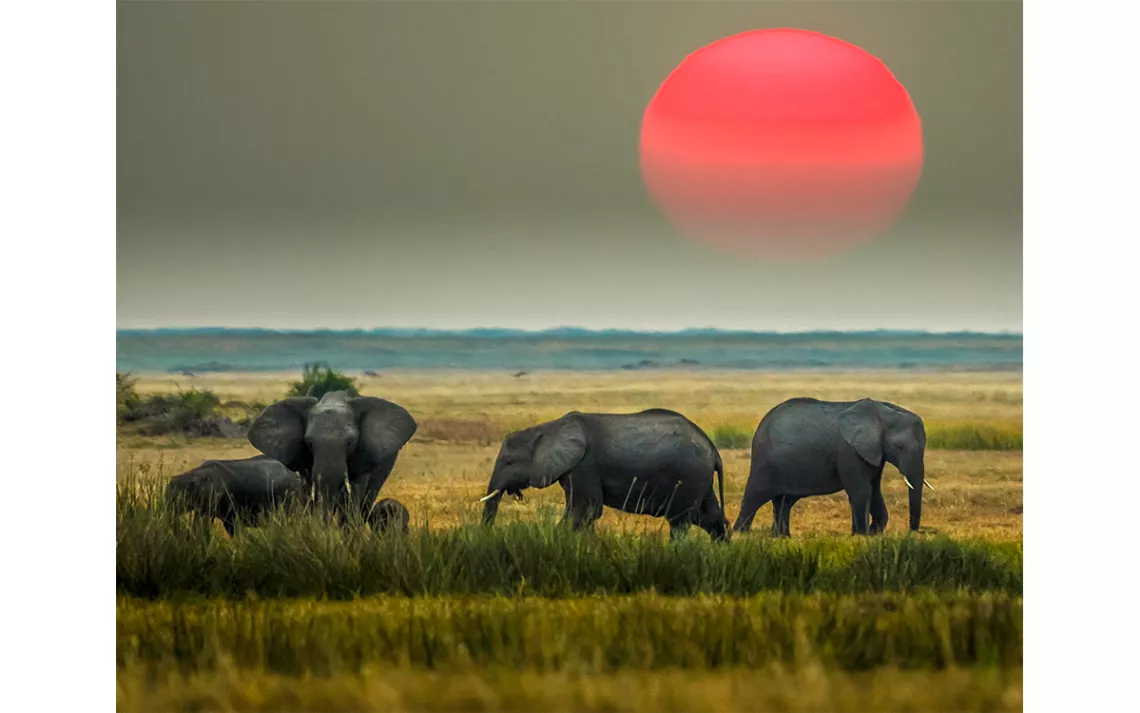The Will to Save the Elephant From Extinction
Art Wolfe’s “Wild Elephants”
Photos by Art Wolfe
A century ago, as many as 12 million elephants roamed the continent of Africa. Today, that number has plummeted to an estimated 400,000. A combination of illegal poaching for ivory, human encroachment, climate change, and war has reduced the pachyderm’s numbers and the available terrain on which it can thrive. In Asia, elephant populations have fallen by as much as 50 percent.
Today, this iconic animal that many first encounter in storybooks like Babar and Horton Hears a Who! is increasingly at risk of disappearing from the earth. Will future generations only know the elephant like we know the dinosaur: through sketches and storybooks, or in museums, reconstructed with armature and plaster casts of tusk and bone? Can we save the elephant from a fate that we humans are largely responsible for?
We can and we must, according to renowned conservation photographer Art Wolfe, who has documented the elephant and countless other species throughout a career spanning five decades. We just need the awareness, resources, and will to change course.
“Giving up and being demoralized isn’t going to help anybody, let alone the animals we are highlighting,” Wolfe told Sierra. “Almost every animal that I’m photographing is affected by either climate change or having to adapt to more humans and their environment. Elephants are such an iconic animal that the concept of living in an age where they could easily go away is just unacceptable to me.”
To leaf through Wolfe’s latest collection, Wild Elephants: Conservation in the Age of Extinction (Earth Aware Editions, 2019), is to be introduced to an animal whose elegance, intelligence, and social complexities signal one of nature’s least understood yet most compelling wonders. On any given page, we are granted access to intimate scenes of bulls roaming through riverine scrub, couples walking trunk-to-trunk, and calves shouldering each other as they play in mud pits. Turn to one page and a black-and-white captures a small group of bush elephants meandering on an empty plain below a charcoal sky in Amboseli National Park, Kenya. Turn to another and a herd in Okavango Delta, Botswana, backlit against a setting sun, fades away into rich hues of strawberry and tangerine. This is a marriage of fine art and conservation photography at its finest.
The challenge for any photographer who wants to dedicate an entire volume to a single species is avoiding redundancy. This can be especially difficult when it comes to the elephant, since to the untrained eye, the gray animals can often be indistinguishable from one another.
Wolfe tackles the problem by delivering images that differ in vantages and perspectives, shifting his lens at times toward behavior and intimacy and at others toward light and circumstance, in settings that range from the desert to the forest, from the savanna to the wetlands.
“I’ve always wanted to capture the details of these animals because they are walking textures,” Wolfe says.
Wolfe's close-ups of African bush elephants in Zakouma National Park, Chad, are just some examples of how he accomplishes this. In one shot, he zooms in so close to the snout of an elephant’s trunk as it captures cascading beads of water that we can see each individual black hair popping off the animal’s glistening stippled skin. The elephant was one of about nine that regularly visited the park’s headquarters, walking up to within a few feet of the building where park rangers held out a water hose from which to drink.
But the text that accompanies the photos can be just as compelling. Dr. Samuel K. Wasser—a conservation biologist at the University of Washington and a pioneer in developing noninvasive tools for monitoring human impacts on wildlife, including tracking poachers—describes how drug cartels have turned as much to ivory poaching as to narcotics for banking a profit, with far-flung middlemen in places like Hong Kong.
“Whether it’s peddling drugs or ivory, it means nothing to them,” Wolfe says. “It’s about making money. For them, if the elephant goes extinct, all the better because it just drives the prices of ivory higher.”
But there are conservation success stories to be celebrated as well. For example, during the last Sudanese civil war, the Janjaweed militia took to crossing into Chad to butcher elephants for ivory. The late Paul Allen, cofounder of Microsoft and a staunch conservationist, invested millions to provide technology like radio collars, sensors, and drones for tracking one superherd of elephants, as well as weaponry to help rangers protect it. Today the herd is thriving.
Wolfe has been fascinated by elephants since his first trip to Africa in 1980, when friends invited him to climb Mt. Kilimanjaro. Afterward, they trekked across the Serengeti. Wolfe was angling to photograph a lion or leopard until, during a visit to the Ngorongoro Crater, he encountered a group of large tuskers. The photographs in Wild Elephants span all the way back to that first encounter.
What does it mean for Wolfe, who has been documenting the great stories of the wild for so long, to be doing this work now in an age of accelerating extinction?
“It certainly compels me to not sit back and rest and say, well, I’ve been working for five decades, let somebody else pick up the baton,” he says. “No. I feel compelled to work even more. I’m virtually on the road nonstop. Telling the stories of not only elephants but also other animals. I immerse myself in the work. I document and talk about the animals, the environments, the cultures that I care about. That is part of my contribution.”
One of Wolfe’s greatest fears is boredom, and it shows. He’s just released another volume of photographs called Human Canvas, which is a celebration of the human form, and he’s currently working on seven other books, including one on the world’s religions and another tentatively titled Night on Earth, documenting the wild at night.
As a boy, Wolfe explored the wooded ravines west of Seattle, consulting mammal, tree, and bird field guides to teach himself about the various species he might encounter there. That same fascination with the natural world is what drives him to continue documenting it and to do what he can to help others care enough before it’s too late.
“People come up to me so dejected about wildlife in this age,” he says. “We have to balance the realization that climate is affecting animals but some are doing well. We have to stay hopeful. Climate is going to affect all of our lives, including these animals'. Either you fight it and have the will to, or you just hole up in a house and turn up the TV. I want to get out there and tell the positive stories and rally the support that’s needed to preserve these animals.”
 The Magazine of The Sierra Club
The Magazine of The Sierra Club
